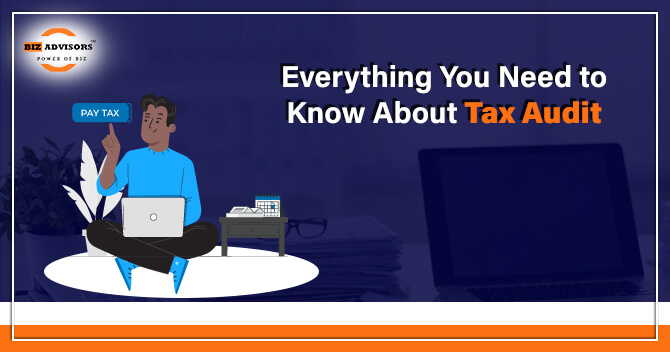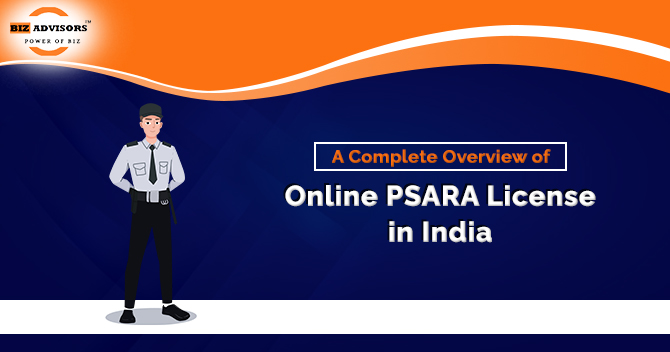Tax Audit imparts the structural framework concerning the provisions of the Income Tax Act, of 1961 in confirmation with the assessment of the account of every taxpayer. Under Section 44AB of the Income Tax Act, of 1961, it becomes the responsibility of every taxpayer to go through the procedural systemization of Tax Audit to avoid any kind of intricacies in the operational functioning of law and also to ensure a smooth payment of the amount. Reviewing the accounts of the taxpayers adamantly advocates the ideal structural pattern of Income Tax law for scrutinizing the nuances in the social functioning of a corporation or enterprise in a well-organized format. Tax Audit meticulously governs the systematic procedural framework of tax payment and firmly create a balance between law and society on a wide platform. Large Businesses and multi-millionaire cinema houses and leading corporate sectors have to undergo the procedural formalities accentuated in Section 44AB of the Income Tax Act, of 1961 for the approved scrutinizing of the taxpayer’s account on the behalf of these entities for ensuring a fair trial of monetary transfers. Tax Audit permits to have access to a set of protocols for easy regulation of the functioning of an enterprise on a broad scale. Therefore, every taxpayer must adhere to the instructions reflected in Section 44AB under the wide ambit of the Income Tax Act, of 1961 for subscribing to a systematic way of efficient monitoring of tax amount.
Aim of Tax Audit
The following goals are pursued through a Tax Audit:
· Assure that your books of accounts are kept up to date and accurate and that a tax auditor has certified them.
· After carefully examining the books of accounts, the tax auditor makes reporting observations or finds errors.
· To submit the required information, such as tax depreciation, and to demonstrate compliance with different income tax law rules, etc.
· All of these help tax authorities confirm the accuracy of the income tax returns submitted by the taxpayer. It also becomes simpler to figure out total income, verify it, and claim deductions, etc.
Scope of Implementation concerning the Tax Audit
Tax Audit must be conducted for the following individuals under Section 44AB: >Rs. 10 billion in annual gross revenue
A person is subject to an audit under Section 44AB of the Income Tax Act if their yearly gross revenue exceeds one crore.
More than Rs. 50,000 in annual gross income
Assesses are eligible for this procedure when their annual gross income in their line of work exceeds Rs. 50 Lakhs.
Essential Documentation for Tax Audit
Documentation Needed to Prepare a Tax Audit Report:
· Name of the Assessor
· Address
· PAN/Aadhar Card/GST Registration Number of the Assessor or any other document that attests to the payment of Indirect Taxes
· The Assesses status under Section 2(31) of the Income-tax Act of 1961 as a person
· Section 44AB’s Relevant Clause for the Prior Year and the Assessment Year
· Business nature and, if any, changes to that nature
· If the Assesses has selected the 115BA, 115BAA, or 115BAB taxation scheme and has submitted Form 10-IB, 10-IC, or 10-ID,
· Information about the partnership firm or AOP books of accounts by Section 44AA
· Whether the P&L has a benefit or income as a result of the assumed scheme (44AD, 44ADA, 44AE, 44AF, 44B, 44BB, 44BBA, 44BBB, Chapter XII-G, First Schedule, or any other applicable provision)
· An accounting method used the previous year and any changes to it
· To comply with ICDs U/s 145(2), whether the P&L account needs to be adjusted Closing stock valuation methodology for the preceding year
· The capital asset that was converted to stock’s specifics, if any
· Investment Income
· Detailed Depreciation
· Amount permissible by Sections 32, 33, and 35 of the ITA of 1961
· The sum received or paid to workers.
· Money that was taken out of the profit and loss account
· Rate of interest charged under Section 23 of the MSME Act of 2006
· Any payment made to individuals who are subject to taxation under Section 40A 2(b) regarded as profitable
· Gain subject to tax
· Amount mentioned in section 43 B
· Information about the Loan or Amount Deposited and a certificate from the Assesses confirming the Amount Referred under Section 43B
· Loss or depreciation brought forward.
· Tax levied on profits
· Tax overview
· TDS
· Turnover Ratio
Required Documents for Tax Audit:-
· Management Declaration Statement
· Letter of Employment for Determining Scope
· A list of transactions and connected parties
· Trail balance
· Financial Statements with proper Owner signatures
· Legal Compliances
· Estimated liabilities, including contingent liabilities
· Notes about the business environment
· Statement of Depreciation Calculation
· Evidence of revenue expenditure capitalization and asset acquisition
· Unusual things, nature, and disclosure
· Confirmation of bank balance
· Financial statement[1]
· Confirmation of the principal various debtors’ and creditors’ balances
· Valuation of inventories and declaration of quantitative inflows and outflows for the entire year
· Accounting Policy Disclosure and Notes on Accounts
· Sample sales and purchase invoices
· Analysis of Calculated Ratio
Application Process
A Tax Audit includes the subsequent steps:
· A tax auditor is chosen: Finding a tax auditor is the first step. Any IRS employee or the company’s chartered accountant can serve as the auditor.
· Submitting the required paperwork to the auditor after filling out the form: The proper form must then be filed, and the tax auditor must be provided with the necessary supporting documentation
· The auditor’s verification of the documents: The auditor reviews all pertinent information and each document the taxpayer has provided after they have submitted the required paperwork. To fully understand the taxpayer’s transaction, the auditor may also request more papers.
· Creation of an audit report: Finally, the auditor creates an audit report after checking all the papers. The audit report serves as evidence that the taxpayer followed all applicable tax laws.
Conclusion
The aforementioned text imparts the systematic procedural format concerning the structural outlook of Tax Audit in a conceptualized manner. The Co-relation of Tax Audit with the framework of the Income Tax Act, of 1961 robustly trivializes the deviance in monetary systemization to a larger extent and also ensures smooth and efficient conduct of taxpayers in determining the actual estimation of the funds. Our legal luminaries in BizAdvisors.io take charge of providing a reinforced support system in regulating a structural framework of Income Tax laws to assist individuals in going through the procedural formalities of Tax Audit under Section 44B without any difficulty. You can freely contact our legal experts for any kind of personal assistance or help in the context of understanding the key concepts and principles of Tax Audit conspicuously.
Read our article:How to File TDS Return in India?
 9559179325
9559179325 9559179325
9559179325





